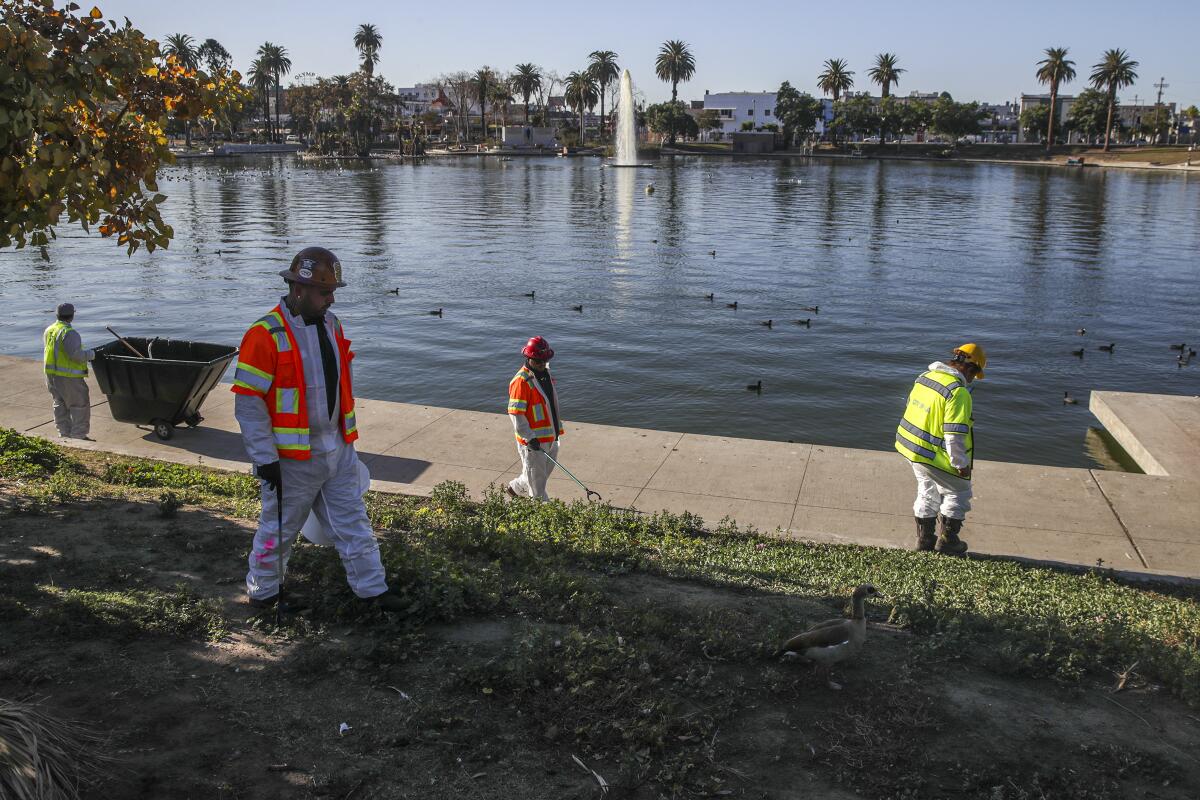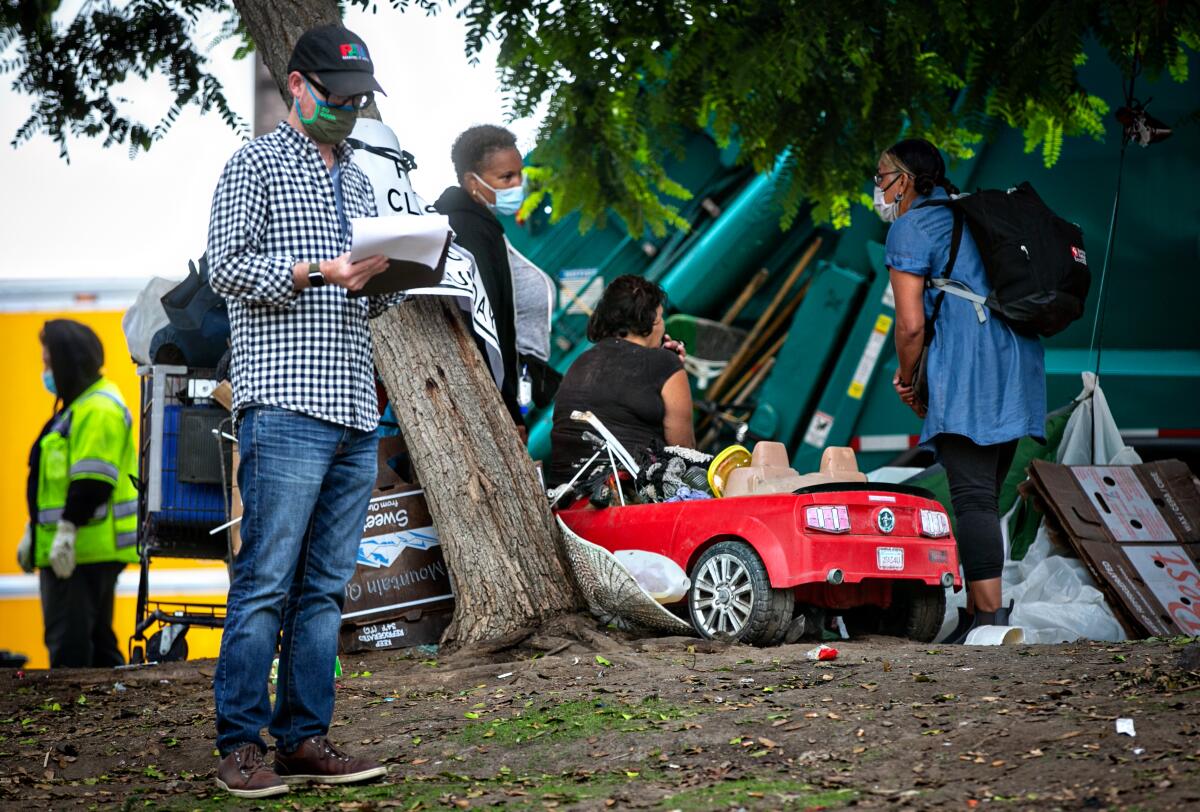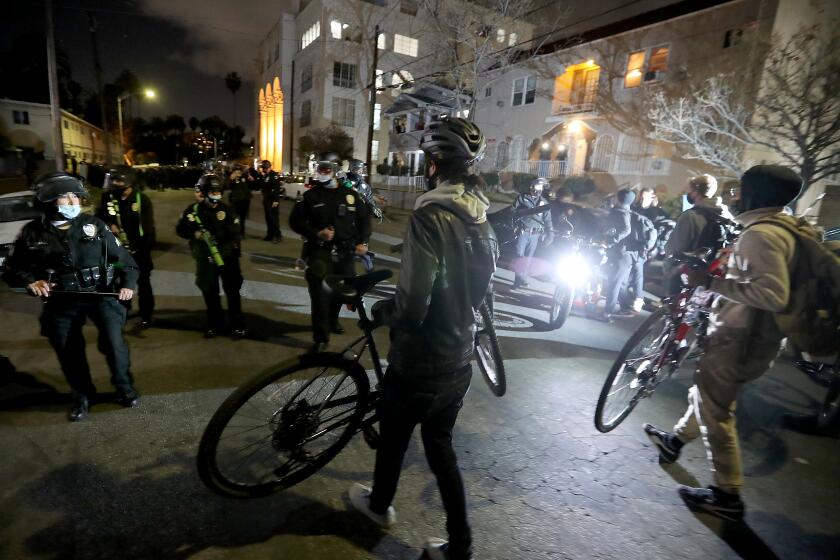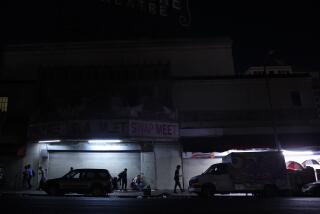MacArthur Park reopens after months-long closure for cleanup and renovations

After four months, MacArthur Park’s southern section is reopening to the public.
The park closed in October for $1.5 million in renovations and maintenance that had been postponed due to the COVID-19 pandemic, including sidewalk repairs, tree trimming and the addition of new lights and cameras, hundreds of trees and new recreation areas.
“I am proud to reopen MacArthur Park Lakeside to make it clean, safe, and secure,” Councilmember Gil Cedillo, whose district includes the park, said in a statement Tuesday.
More than 160 homeless people were moved indoors from both sides of the park in the 10 months leading up to the closure, according to numbers provided by Cedillo’s office.

Nearly 130 people living in the park had been put in hotel and motel rooms through Project Roomkey by Oct. 15, the day of the park’s closure, according to Cedillo’s office. As of Feb. 14, 46% of them were still in shelters.
The closure went largely without incident, despite fears of a repeat of the violent confrontations seen during the earlier closure of Echo Park Lake and the forced removal of an encampment there.
“We were able to do that without any drama, without any rancor, without any presence of the police,” Cedillo said.
Analysis of the Echo Park closure and resulting protests in March found several shortcomings.
In March, seven months before MacArthur Park was closed, more than 180 people were detained or arrested in Echo Park during a protest over its closure, and several demonstrators were injured by police. The timing of that closure had been kept secret until the last minute; in MacArthur Park, the date of the closure was announced weeks in advance.
The Los Angeles Homeless Services Authority and nonprofit homeless services provider PATH will have outreach teams regularly walking MacArthur Park to direct people to services, and unarmed park rangers will be present from the evening through the early morning, Cedillo said.
“Our goal is that we don’t have one tent go up, because we will have a service provider there to give that unhoused person the better choice of coming in and receiving services,” Cedillo said.
“That’s our strategy and we would like to test it,” he said. “We believe in it.”
More to Read
Sign up for Essential California
The most important California stories and recommendations in your inbox every morning.
You may occasionally receive promotional content from the Los Angeles Times.












